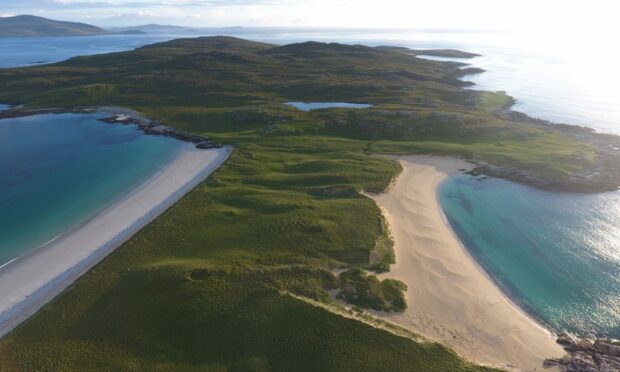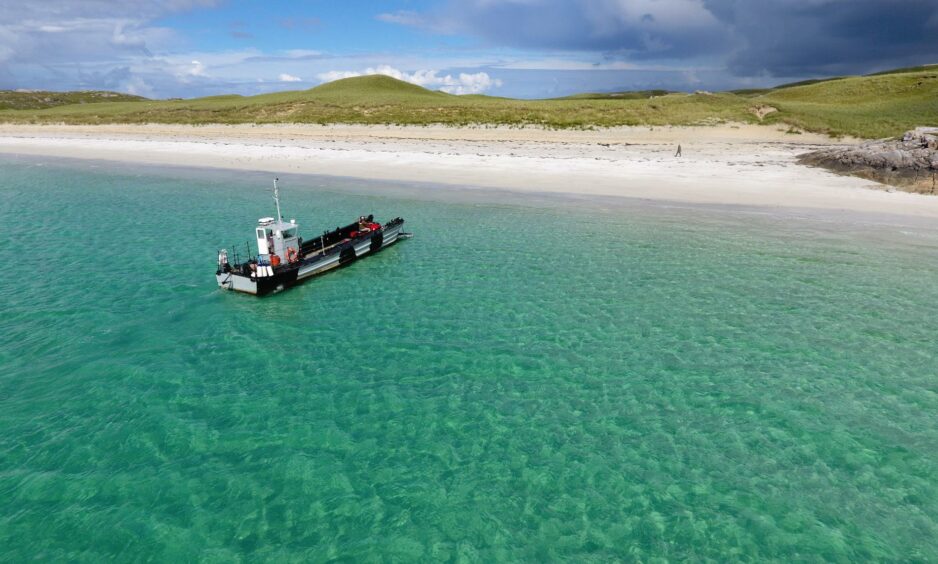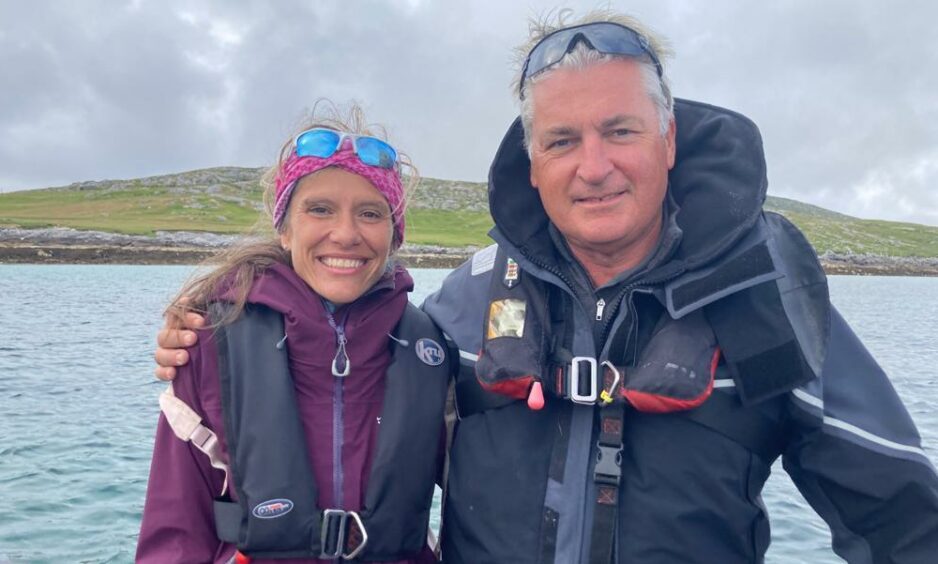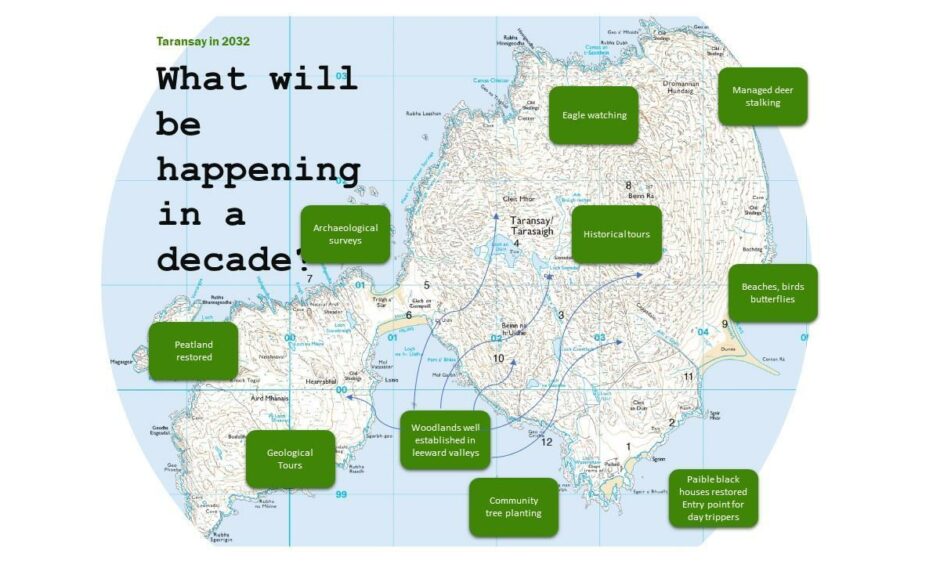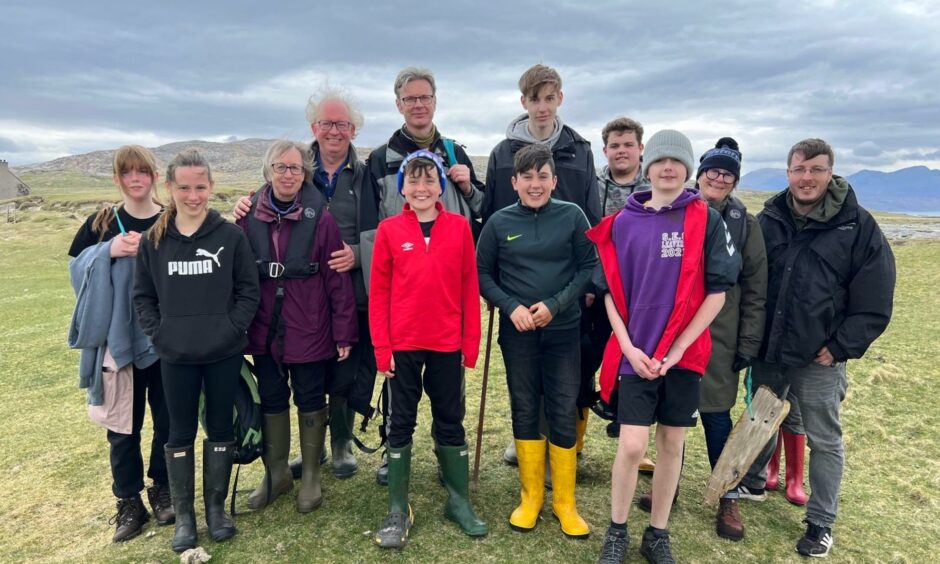The first paying visitors to Taransay came ashore today and witnessed the early signs of a long-term ecological restoration vision for the island.
An initial 10-year plan has already begun on environmental, historical and social projects for the uninhabited island, the one-time setting for the Castaway TV series.
Island owners Adam and Cathra Kelliher say when they bought Taransay in 2011 it had only one standing tree, an aspen, which had escaped deer and sheep by growing out of an inaccessible cliff.
Monoculture
Centuries of intensive grazing had created a monoculture.
All flora and fauna had been eaten to the roots and there was little evidence of natural flowers, insect life or birdsong.
By 2032 they want to have established woodlands, community tree planting and restored peatlands.
Redeveloped blackhouses, once used by residents, the last of whom left the island in 1974, will also be part of historical and archaeological interpretation.
In addition, geological and historical tours are planned as part of a sustainable tourism exercise which includes day trips from Harris.
Among the first people today was Donald John Ferguson, 85, whose family are from Taransay, including his father, James, who was born on the island in 1902.
Donald John used to visit regularly on holiday but has not been back to Taransay for several years.
He and his wife Hazel, along with cousin George McPherson, joined daytrippers on the landing craft, the Mary Jane. They planned to pay a visit to the grave of Donald John’s great grandfather, Angus Ferguson.
Vision follows years of research and planning
The trip was organised by Donald John’s daughter Shirley Buchan as a diamond wedding gift for her parents.
“Dad always wanted to get back to Taransay but has been unable to for a few years”, she said.
“I’m really pleased it’s been arranged. It will bring back a lot of memories of when they were younger and visited the island.”
The restoration work on Taransay is the result of years of research and planning by the Kellihers who bought the island amid strong competition, including, reportedly, from Castaway star Ben Fogle.
The couple, who own Borve Lodge Estate, once owned by Cathra’s father David Horrobin, have worked with experts on ecology, wildlife and the planting of native trees.
They say as stewards of Taransay they wish to restore the island’s biodiversity to a pre-grazing state, last seen in the Bronze Age.
“It was clear to us that the sheep and deer were dominating, and significant flora and fauna just could not get a chance to take hold.
“So when our resident farmer said he wanted to remove his sheep, that caused us to pause, and ask ourselves how maybe a more balanced grazing approach would benefit the island’s ecology.”
What has happened so far?
The ecology-focused venture has seen them remove the sheep, introduce a summer cattle herd and dismantle miles of defunct stock fences.
The first deer-proof enclosure was built to protect 200 native trees, mainly ash and willow, and there are plans to gradually reduce the deer herd.
An environmental impact study last year showed the regeneration of willow, honeysuckle, rowan, ferns, heather and machair.
Habitat ecologist Stuart Adair said: “Taransay offers a rare chance to restore both nature and community to this iconic Western Isle and, in doing so, help play our part in tackling the ongoing global ecological and climate crisis and re-engage local people with their own heritage.”
Cathra Kelliher says the vision goes beyond the initial ten-year plan.
“We have an opportunity on Taransay to change the land management in such a way we hope will benefit the environment.
“It’s very much about bringing together the human and the natural heritage. Working with other groups, and particularly the community, is essential.
“Although it’s a private island, it’s an island embedded in a very strong and local community. We are all going to be doing this together.”
Sensitive to ‘green laird’ concerns
She is conscious of the recent debate over so-called green lairds, and green-washing, where individuals and companies buy land and use tax breaks and subsidies to cut carbon emissions.
“We are very sensitive and aware of the issues around the trend of greenwashing and green lairds.
“That is absolutely not what we are doing. We were thinking about this project long before greenwashing issues came into focus.
“It’s something we believe should be checked and watched. We believe in involving the community in the actuality of the project as well as the decision-making.”
As part of the community involvement, a group from the West Harris Trust’s Growing West Harris project recently visited Taransay to remove grasses inhibiting tree growth, old stock fences and plastic rubbish washed up on the beach.
Iain Maciver, the trust’s community participation officer, said: “We are quite excited about the project. We see it as a chance to reclaim the land for the community by getting involved with Taransay where a lot of people in West Harris still have links.
“Adam and Cathra are very community-minded and it’s great to hear that the voices of the community will be taken into consideration.”
